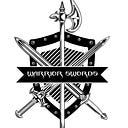Celtic Swords: A Guide to Types, History, and Uses
Introduction:
Envision mist-covered battlefields resonating with the clash of steel — a realm ruled by Celtic warriors, famed for their bravery, ferocity, and mastery of the blade.
“The sword is more than just a weapon; it’s a symbol of strength, honor, and the indomitable spirit of the Celtic warrior.”
Who were the Celtic Warriors?
The Celts, diverse tribes spanning Europe, shared a warrior ethos, united by language, religion, and social hierarchy valuing martial prowess.
The Celtic Sword: A Weapon of Distinction
The La Tène sword, named after a Swiss archaeological site, epitomizes Celtic craftsmanship — single-edged, ornate, lethal — a symbol of status and skill.
More Than Just Swords: The Celtic Warrior’s Arsenal
Beyond swords, Celtic warriors wielded axes, javelins, and the scutum — a wicker shield — showcasing agility and adaptability in battle.
A Legacy of Valor
Celtic warriors’ reputation endured, feared by Romans, admired for their martial prowess, leaving a lasting imprint on European history.
A Variety of Blades: A Look at Celtic Sword Types
From Hallstatt’s broad blades to La Tène’s elegance, explore the evolution of Celtic swords and their deadly effectiveness.
The Hallstatt Period (8th-6th Century BC): The Rise of Iron
Hallstatt swords marked a transition, harnessing iron’s strength and availability, revolutionizing Celtic weaponry.
Beyond the Battlefield: The Symbolic Role of Celtic Swords
Swords represented status and power, adorned with intricate designs, embodying wealth, lineage, and connection to the divine.
A Legacy Forged in Steel
Celtic swords transcended mere weaponry, reflecting mastery in metalworking and influencing medieval European martial traditions.
“The legacy of the Celtic sword endures, a testament to the enduring spirit of a people whose courage knew no bounds.”
